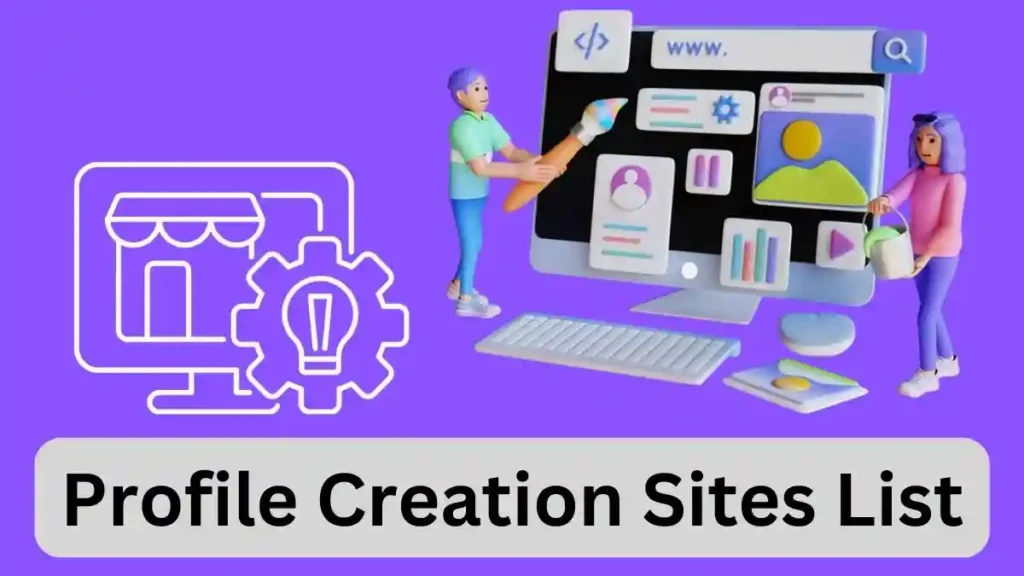Business objectives are the specific, measurable targets that guide your organization toward its mission and vision. In 2025, companies with clearly defined business objectives outperform competitors by 49 percent in revenue growth and achieve significantly higher employee engagement. When developed strategically and executed consistently, business objectives create accountability, align teams, drive performance, and ensure sustainable business growth. This comprehensive guide covers everything you need to master business objectives: definition, types, goal-setting frameworks, measurement strategies, and proven techniques for implementation and success.
Table of Contents
What Are Business Objectives and Why They Matter
Business objectives are concrete, achievable outcomes an organization works to accomplish over specific timeframes. Unlike vague aspirations, business objectives are specific, measurable, and time-bound. They translate your company vision into actionable targets guiding daily decisions and resource allocation. Business objectives answer the critical question: “What exactly are we working toward?” They provide clarity, focus, and accountability across the entire organization.
Business objectives matter because they bridge the gap between where your company is today and where you want to be in the future. Clear objectives create alignment ensuring all departments and employees work toward common goals. They enable measurement and accountability tracking progress objectively. They facilitate resource allocation directing investment toward highest-priority initiatives. They motivate teams providing clear targets and recognition criteria. Companies with effective business objectives achieve significantly higher performance than those without clear direction.
Core Components of Effective Business Objectives
| Component | Description | Strategic Impact |
|---|---|---|
| Specificity and Clarity | Clearly defined outcomes avoiding ambiguity and confusion | Ensures everyone understands exactly what needs to be achieved |
| Measurable Targets | Quantifiable metrics enabling objective progress tracking | Allows data-driven assessment of success or failure |
| Achievability and Realism | Challenging yet attainable goals within realistic timeframes | Maintains team motivation while driving meaningful progress |
| Relevance to Strategy | Direct alignment with organizational mission and vision | Ensures efforts contribute to long-term success |
| Time-Bound Completion | Specific deadlines creating urgency and accountability | Prevents indefinite postponement and enables progress tracking |
| Ownership and Accountability | Clear responsibility assignment and accountability mechanisms | Ensures someone drives progress and maintains focus |
| Resource Allocation | Sufficient budget, tools, and personnel for achievement | Removes barriers and enables successful execution |
| Progress Monitoring and Adjustment | Regular tracking and flexibility to adjust based on circumstances | Enables rapid course correction and sustained progress |
Advantages and Disadvantages of Different Business Objective Types
| Objective Type | Key Advantages | Important Disadvantages |
|---|---|---|
| Financial Objectives | Clear measurement, directly tied to business viability, easy tracking | May neglect important non-financial factors, can encourage short-term thinking |
| Customer-Focused Objectives | Builds loyalty, generates sustainable revenue, improves market positioning | Results may take time, difficult to measure precisely, requires ongoing investment |
| Operational Efficiency Objectives | Improves profitability, reduces waste, increases productivity | May reduce quality if not balanced, employee resistance to change, implementation costs |
| Growth and Market Expansion | Increases revenue potential, builds market presence, attracts investors | High risk, requires significant investment, may strain resources, new market uncertainty |
| Innovation and Product Development | Creates competitive advantage, generates new revenue streams, attracts talent | Uncertain outcomes, high failure rates, long development cycles, expensive |
| Employee Development Objectives | Improves retention, increases engagement, develops future leaders | Slow to show ROI, difficult to measure, requires ongoing investment, voluntary participation |
Step-by-Step Guide to Setting and Implementing Business Objectives
Step 1: Define Your Vision, Mission, and Values
Start by clarifying your organizational vision describing the desired future state. Define your mission explaining why your company exists and what value it creates. Articulate core values guiding decision-making and company culture. These foundational elements inform all business objectives ensuring alignment and coherence. Business objectives should flow logically from your vision, mission, and values.
Step 2: Conduct Environmental Analysis and SWOT Assessment
Analyze your business environment identifying opportunities and threats. Assess internal strengths and weaknesses. Understanding the complete landscape enables realistic goal-setting grounded in market reality. This analysis informs objective prioritization directing focus toward highest-impact opportunities.
Step 3: Identify Strategic Priorities
Determine three to five critical focus areas where success is most important. Strategic priorities guide objective selection ensuring limited resources target highest-impact initiatives. Effective organizations focus narrowly rather than dispersing efforts across too many objectives.
Step 4: Develop Business Objectives Using SMART Framework
Create specific objectives that are Specific, Measurable, Achievable, Relevant, and Time-bound. Specific objectives clearly define what will be accomplished. Measurable objectives include quantifiable targets enabling objective assessment. Achievable objectives stretch capabilities while remaining realistic. Relevant objectives align with strategic priorities and mission. Time-bound objectives include clear deadlines creating urgency and accountability.
Step 5: Cascade Objectives Across the Organization
Translate organizational objectives into departmental and team-level objectives. Ensure lower-level objectives support higher-level ones creating alignment throughout the organization. Each employee should understand how their work contributes to overall business objectives.
Step 6: Develop Detailed Action Plans and Initiatives
For each objective, create detailed action plans specifying how achievement will happen. Break down large objectives into smaller initiatives and milestones. Assign responsibilities, allocate resources, and set phase deadlines. Clear action plans enable execution and progress tracking.
Step 7: Establish Key Performance Indicators and Metrics
Define specific metrics and key performance indicators tracking progress toward objectives. Metrics should be objective, relevant, and measurable. Establish baseline measurements and target levels. Regular tracking enables performance assessment and rapid adjustment if needed.
Step 8: Implement, Monitor, and Adjust
Execute plans and monitor progress against established metrics. Review performance regularly identifying obstacles and opportunities. Maintain flexibility adjusting strategies as circumstances change while maintaining focus on core objectives. Continuous improvement based on performance data drives success.
Types of Business Objectives and Examples
Financial Objectives
Financial objectives focus on revenue, profitability, and cost management. Examples include increasing annual revenue by 25 percent, achieving profitability within 18 months, reducing operational costs by 15 percent, or improving cash flow by 30 percent. Financial objectives ensure business viability and provide clear measurement points.
Customer and Market Objectives
Customer objectives focus on market share, customer satisfaction, and brand positioning. Examples include increasing market share by 10 percent in priority segments, improving customer satisfaction scores by 20 percent, reducing customer churn by 15 percent, or reaching 100,000 new customers. Customer objectives build sustainable revenue sources and competitive advantage.
Operational and Efficiency Objectives
Operational objectives improve productivity and efficiency. Examples include reducing production costs by 20 percent, improving delivery times by 30 percent, increasing employee productivity by 25 percent, or reducing error rates by 50 percent. Operational objectives directly improve profitability and competitive positioning.
Growth and Innovation Objectives
Growth objectives focus on expansion and new opportunities. Examples include launching three new products within 12 months, expanding into two new geographic markets, growing annual revenue 40 percent, or increasing market reach by 50 percent. Growth objectives build future competitive strength and market position.
Employee and Organizational Objectives
People objectives focus on talent development and organizational capability. Examples include reducing employee turnover by 25 percent, increasing employee engagement scores by 30 percent, developing 10 internal leaders, or implementing comprehensive skills training program. People objectives build organizational capability and culture.
Business Objectives Frameworks and Tools Comparison
| Framework | Best Features | Primary Use | Ideal For |
|---|---|---|---|
| SMART Goals | Specific, Measurable, Achievable, Relevant, Time-bound structure | Individual and team goal setting | Any organization wanting clear, actionable goals |
| OKRs (Objectives and Key Results) | Ambitious objectives with measurable key results, quarterly cycles | Organizational alignment and scaling | Growing companies wanting rapid iteration and focus |
| Balanced Scorecard | Multi-perspective framework covering financial, customer, internal, learning | Comprehensive strategic management | Established organizations wanting balanced strategic view |
| Management by Objectives (MBO) | Collaborative goal setting emphasizing employee involvement and empowerment | Organizational alignment and employee engagement | Organizations prioritizing employee development and accountability |
| Strategic Planning | Comprehensive 3-5 year planning with environmental analysis and cascading goals | Long-term organizational direction setting | Strategic planning and board-level goal alignment |
Business Objectives Tools and Platforms
- Asana: Goal and project management enabling objective tracking across teams
- Monday.com: Work operating system facilitating objective alignment and progress tracking
- Lattice: Performance management platform including goal management functionality
- 15Five: OKR and goal management designed specifically for objectives and key results
- Perdoo: OKR platform providing frameworks, tracking, and team alignment
- Gtmhub: Comprehensive OKR and strategy execution platform
- Wrike: Project and objective management enabling cross-team alignment
- Smartsheet: Enterprise work management including objective tracking and reporting
Implement Your Business Objectives Strategy
Get professional tools and frameworks to set, track, and achieve business objectives driving organizational success.
Best Practices for Business Objectives Success
- Align all business objectives with organizational mission, vision, and values
- Limit objectives to three to five critical priorities per organizational level
- Use SMART criteria ensuring objectives are specific, measurable, and achievable
- Cascade objectives from top to bottom ensuring organizational alignment
- Include both quantitative and qualitative objectives for balanced perspective
- Involve teams in objective setting increasing buy-in and realistic assessment
- Balance short-term and long-term objectives preventing myopic focus
- Establish regular review cycles typically quarterly or monthly
- Track key performance indicators providing objective progress measurement
- Communicate objectives transparently ensuring universal understanding
- Celebrate achievement and learn from shortfalls
- Adjust objectives based on changing circumstances while maintaining overall focus
Common Business Objectives Mistakes to Avoid
- Too Many Objectives: Spreading focus across too many goals dilutes effort and results
- Vague or Unmeasurable Objectives: Objectives without clear metrics enable excuses and poor accountability
- Misalignment with Strategy: Objectives not connected to organizational mission create confusion and wasted effort
- Unrealistic Goals: Impossible objectives demoralize teams and are ignored
- No Ownership or Accountability: Without clear responsibility, objectives often fail
- Insufficient Resources: Expecting achievement without adequate resources guarantees failure
- No Progress Monitoring: Without regular tracking, problems go undetected until too late
- Ignoring Obstacles: Not identifying barriers prevents problem-solving and contingency planning
- Rigid Adherence to Impossible Targets: Unable to adjust when circumstances change
- Poor Communication: If teams do not understand objectives, they cannot execute effectively
Real-World Business Objectives Examples
Example 1: SaaS Growth Company
Objectives: Increase annual recurring revenue 75 percent to 5 million dollars, reduce customer acquisition cost 20 percent, improve net retention to 120 percent, launch two new product features. Implementation: Expanded sales team by 30 percent, optimized pricing, implemented customer success program, increased product development investment. Result: Exceeded revenue target, achieved 115 percent net retention, launched both features on schedule, attracted Series B funding.
Example 2: Established Manufacturing Company
Objectives: Reduce operational costs 15 percent through efficiency improvements, increase product quality achieving 98 percent defect-free rate, expand into three new geographic markets, develop succession plans for 20 percent of leadership. Implementation: Implemented lean manufacturing, invested in equipment upgrades, hired experienced regional managers, created executive development program. Result: Exceeded cost reduction target, achieved quality goals, successfully entered two new markets, filled 60 percent of pipeline positions internally.
Example 3: Non-Profit Organization
Objectives: Increase annual donations 40 percent to 2 million dollars, serve 50 percent more clients, improve program effectiveness by 25 percent, increase volunteer engagement 60 percent. Implementation: Launched major donor campaign, expanded geographic reach, implemented outcomes tracking, created volunteer recognition program. Result: Increased funding to 2.8 million dollars, expanded client base significantly, improved program impact measurably, grew volunteer base from 50 to 150 active volunteers.
Comprehensive FAQ About Business Objectives
What is the difference between goals and objectives?
Goals are broader directional targets like “grow revenue.” Objectives are specific, measurable actions achieving goals like “increase revenue 25 percent in next 12 months.” Goals provide direction. Objectives provide specific targets with measurement capability.
How many business objectives should an organization have?
Most effective organizations maintain three to five core business objectives per organizational level. Too many objectives diffuse focus and effort. Too few may miss important areas. Quality focus beats quantity every time.
How often should business objectives be reviewed?
Review cycles depend on your business pace but typically quarterly or monthly for fast-moving organizations. Annual objectives benefit from quarterly progress reviews and monthly check-ins. The key is regular monitoring enabling rapid adjustment.
Should business objectives remain fixed or change during the year?
Core objectives should remain relatively stable providing direction and accountability. However, be flexible with tactics and timelines adjusting as circumstances change. Maintain focus on objectives while adapting approaches as needed.
How do you involve employees in objective setting?
Involve employees in participatory goal setting building buy-in and leveraging their expertise. Establish organizational objectives first then involve teams in developing departmental objectives. Seek input on action plans and resource needs. Involvement increases commitment and accountability.
How do you measure success against business objectives?
Establish clear key performance indicators for each objective. Track metrics regularly. Compare actual results to targets. Celebrate achievement and analyze shortfalls for learning. Use data to inform future objective adjustments.
What do you do if business circumstances change mid-year?
Review objectives assessing whether they remain relevant. If circumstances significantly change, adjust objectives and action plans accordingly. Maintain focus on core mission while adjusting tactics. Communicate changes transparently to teams.
How do you align departmental objectives with organizational objectives?
Establish organizational objectives first. Then work with departmental leaders to develop specific objectives supporting organizational goals. Each departmental objective should clearly connect to organizational strategy. Document these connections.
Can individuals have personal business objectives?
Yes. Individual objectives aligned with organizational objectives drive personal accountability. Individual objectives might include skill development, performance targets, or project completion. Align individual objectives with team and organizational goals.
How do you handle objective conflicts or trade-offs?
Recognize that objectives sometimes conflict requiring strategic choices. Prioritize ruthlessly focusing resources on highest-impact objectives. Accept that some important work may not advance stated objectives. Communicate trade-offs transparently.
Transform Your Organization With Clear Business Objectives
Get expert guidance and platforms to set, execute, and achieve business objectives driving sustainable growth.
Business Objectives Alternatives and Options
While business objectives are most effective, alternatives include strategic planning without formal objectives, management by intuition, departmental silos operating independently, or quarterly planning without annual framework. Most effective organizations combine formal business objectives with flexibility and continuous learning. Business objectives provide the structure enabling systematic progress toward mission and vision.
Which Business Objectives Approach is Best For Your Organization
The best business objectives approach depends on your organization size, industry, growth stage, and culture. Startups benefit from simple SMART objectives focusing on survival and product-market fit. Established companies often benefit from balanced scorecards providing comprehensive perspective. Growing companies often use OKRs enabling rapid iteration and focus. The key is selecting frameworks and tools matching your organizational reality.
Conclusion: Business Objectives Drive Organizational Success
Business objectives transform organizational vision into concrete, achievable targets. They create alignment, accountability, and direction enabling teams to work toward common goals. When properly developed and executed, business objectives drive employee engagement, financial performance, and sustainable competitive advantage. Organizations that master business objectives consistently outperform competitors lacking clear direction.
Start your business objectives program by clarifying organizational vision and mission. Identify strategic priorities. Develop specific, measurable objectives using SMART framework. Cascade throughout the organization. Establish monitoring processes. Implement action plans. Review regularly and adjust based on results. Over time, consistent focus on business objectives builds organizational capability and predictable success.
The most successful organizations in 2025 are those with clarity about what they are trying to achieve and commitment to systematic progress. They set ambitious yet achievable objectives. They align entire organizations around common goals. They monitor progress rigorously and adjust tactics as needed. They celebrate achievement and learn from shortfalls. The result is organizations that perform consistently, build competitive advantage, and achieve sustainable growth.




